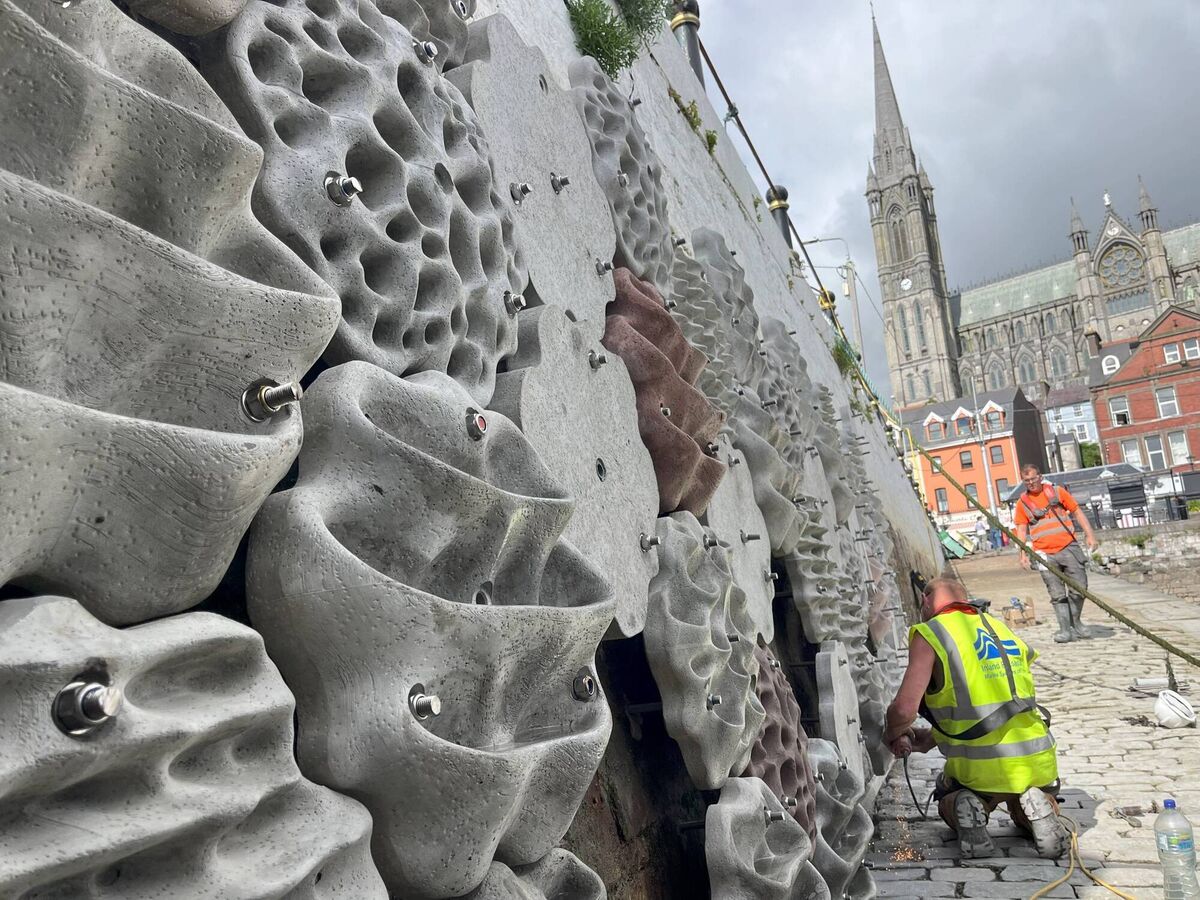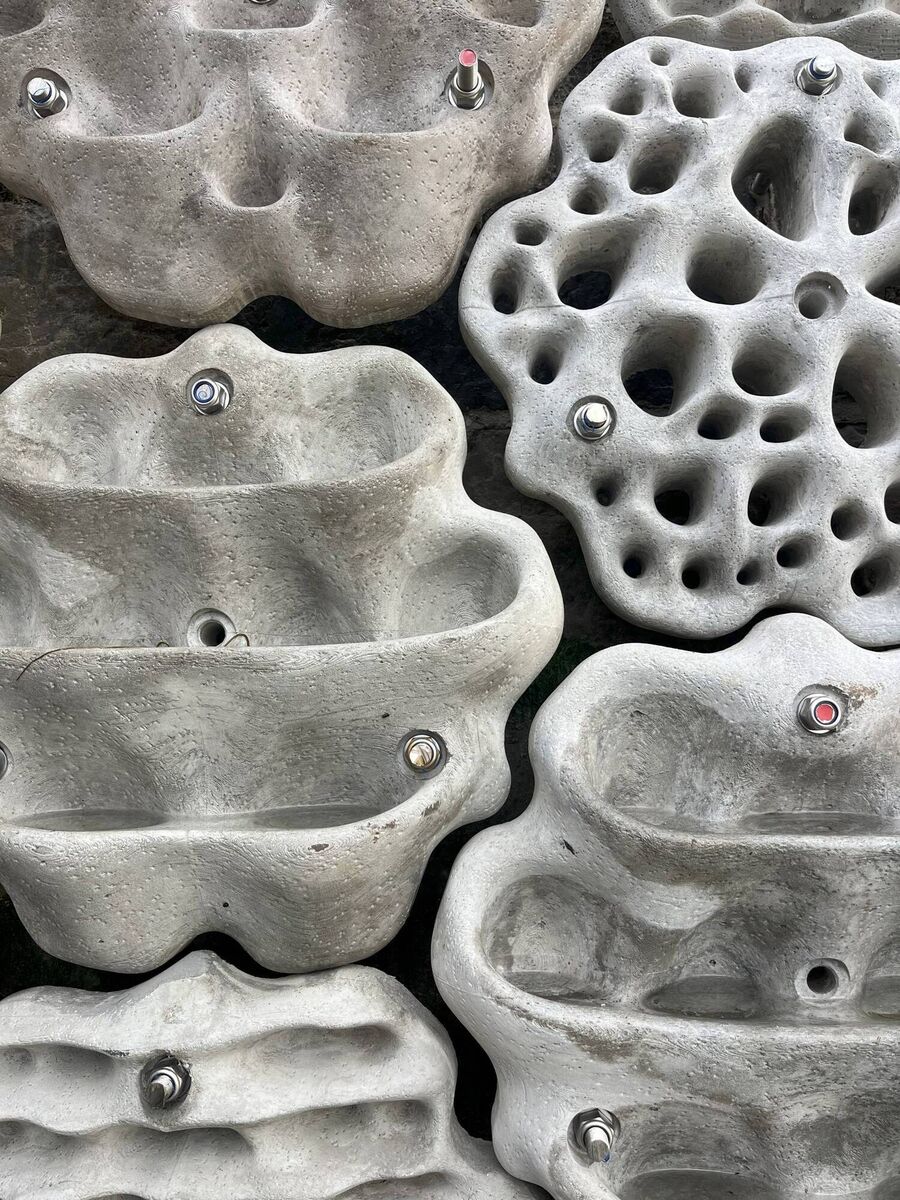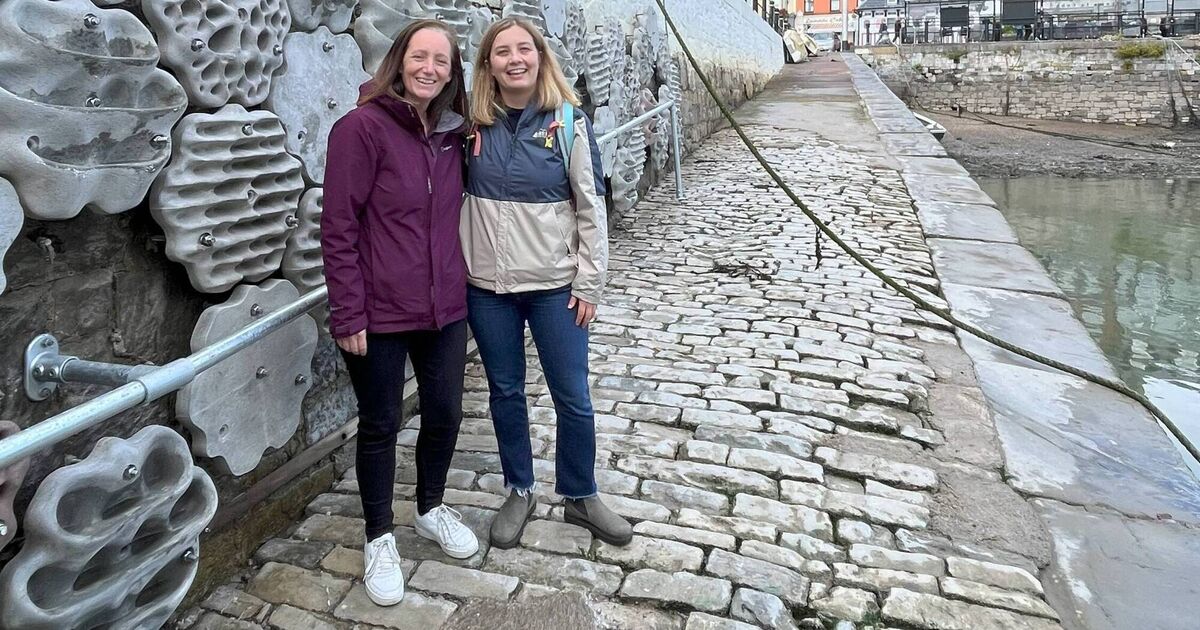Scientists hope the ‘Living Sea Wall’, the first project of its type in Ireland which has been built in Cobh, will be teeming with marine life by next summer and help clean the harbour town’s water.
The UCC Sustainability Unit, Research Ireland and the Port of Cork have combined to deliver the project at Kennedy Pier in Cobh.
Dr Louise Firth, senior lecturer in marine ecology at UCC, said the original quay wall in Cobh is quite old so they retrofitted a special concrete panel into it.
Five different types of panels were used in order to provide as many variations as possible for different marine creatures to make it their home or use it for shelter.
Some are fitted with cup shapes which fill with water when the tide comes and create rockpools. Others have large depressions and others have varying sizes of holes.
“Over time, we expect crabs, sea anemones, marine snails, Bryozoans, also known as ‘moss animals’ and shrimps to colonise them,” Louise Firth said.
 Having more marine life on the structures means various species carry out more beneficial ecological functions.
Having more marine life on the structures means various species carry out more beneficial ecological functions.
Panels with holes in them will provide cover and protection from predators for small fish and crabs.
Ms Firth said some panels were specifically designed with ridges and nooks which would provide ideal homes “for barnacles, limpets and a lot of different types of seaweed and algae”. She said normal sea walls do not have “water retention areas” and this project is therefore adding additional facilities for creatures in the marine habitat.
Having more marine life on the structures means various species carry out more beneficial ecological functions.
For example, seaweeds produce oxygen, while sponges filter the water, making it cleaner. This not only benefits them but humanity in general.
“One month on from installing the panels we are already seeing a little bit of green film [algae] forming. Come next spring, we will see increased colonisation and we expect big [positive] differences in the summer,” Ms Firth said.
The scientist said the project had the benefit of making space for nature along urbanised shorelines, which is good for enhancing marine life and for raising awareness among the public and educating people about the importance of the creatures which live in the sea.
 Panels with holes in them will provide cover and protection from predators for small fish and crabs.
Panels with holes in them will provide cover and protection from predators for small fish and crabs.
“We hope to build more of these around the country. We’re building these on evidence-based techniques [to enhance marine life]. This is part of a global experiment called The Living Sea Walls. The first one in the world was built in Sydney. They’re being built in different climate zones. The one in Cobh is among the first 10 in the world,” Ms Firth said.
Originally from Dublin, she helped build one in Plymouth, England, before moving to Cork to join the UCC teaching staff.
She said Cobh was picked for the first Irish installation as it was an ideal location.
“It has salty water. It will be very visible to the public and the large number of tourists who visit the town, therefore it will add to awareness and education about marine life. So really it’s a great place to put it,” Ms Firth added.
